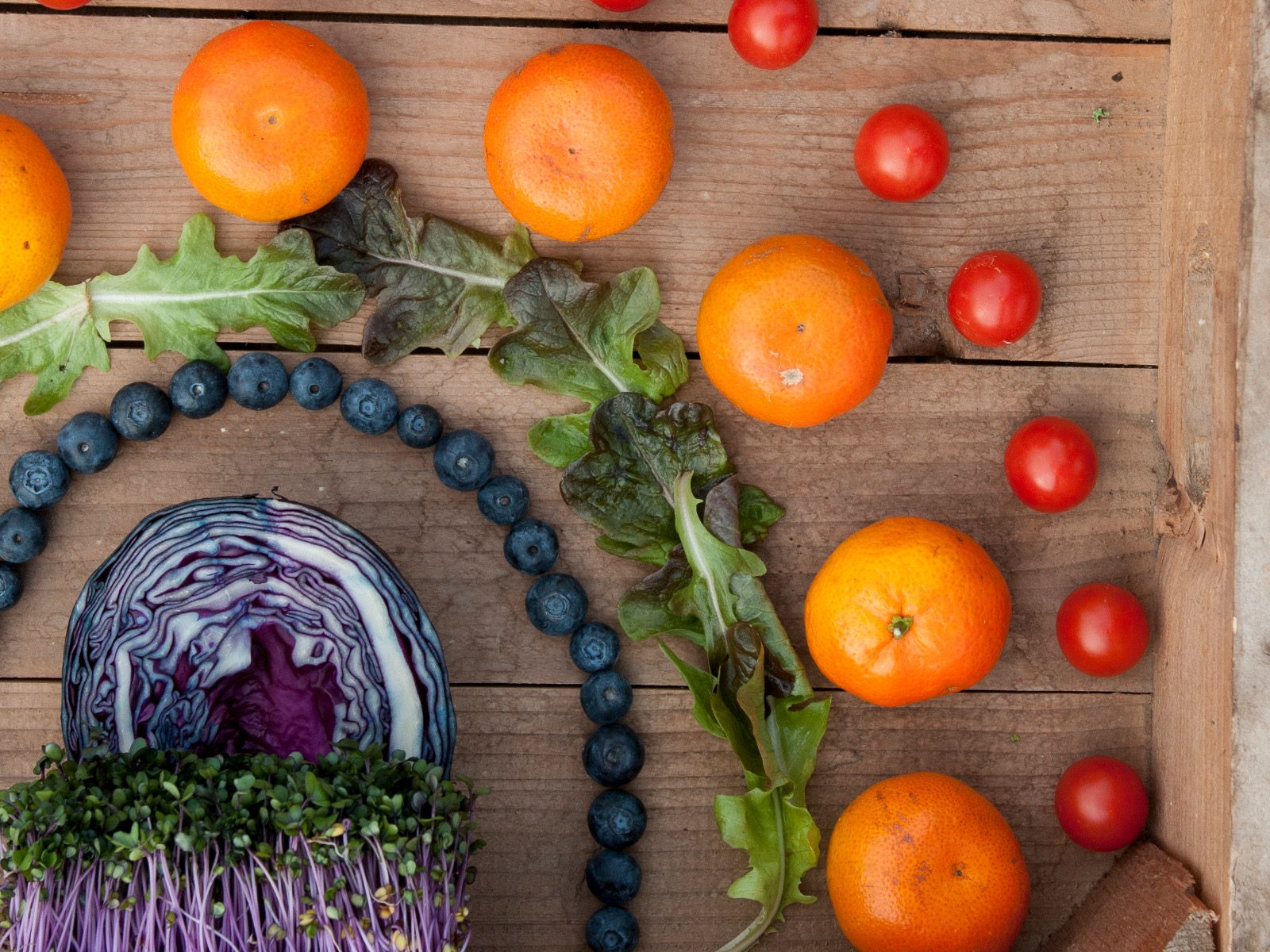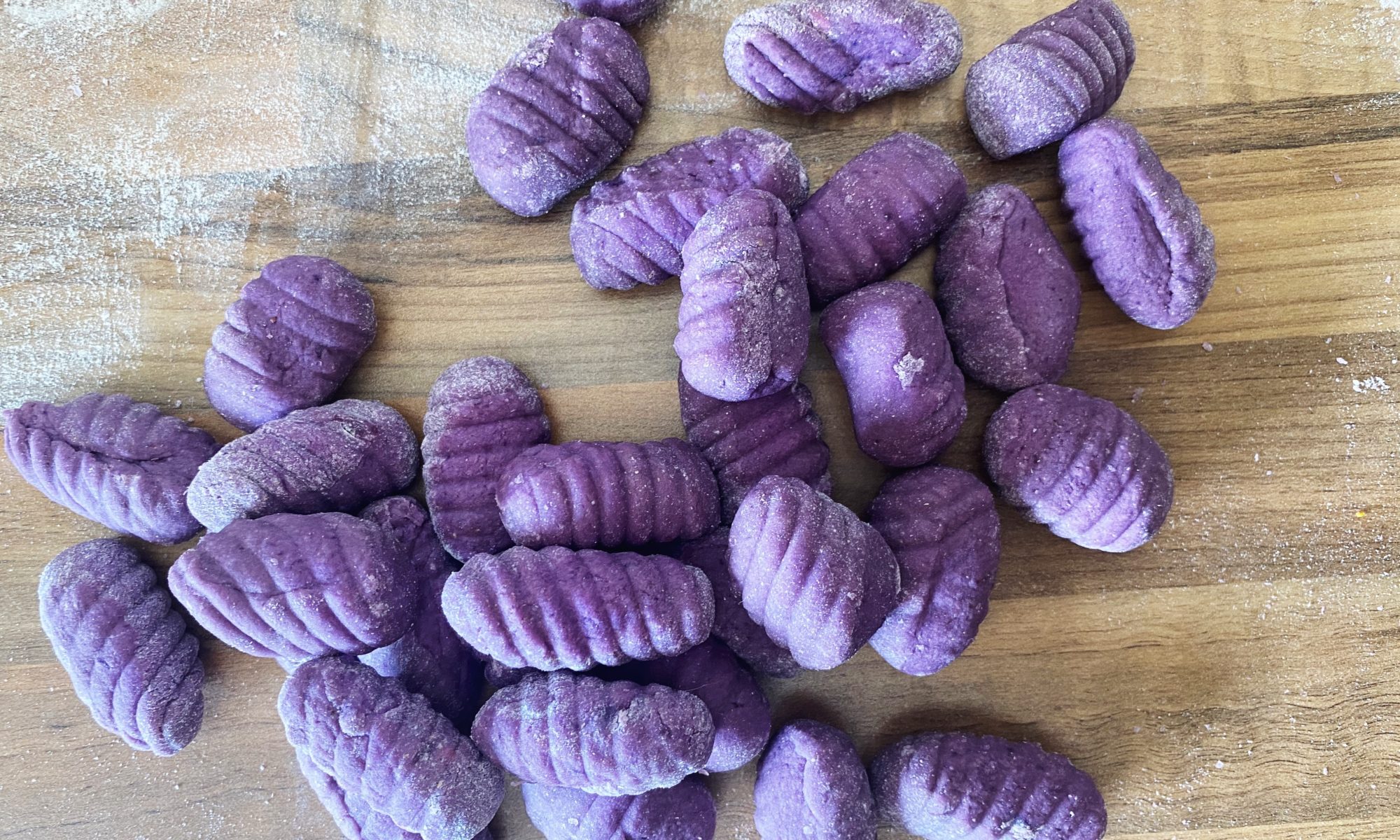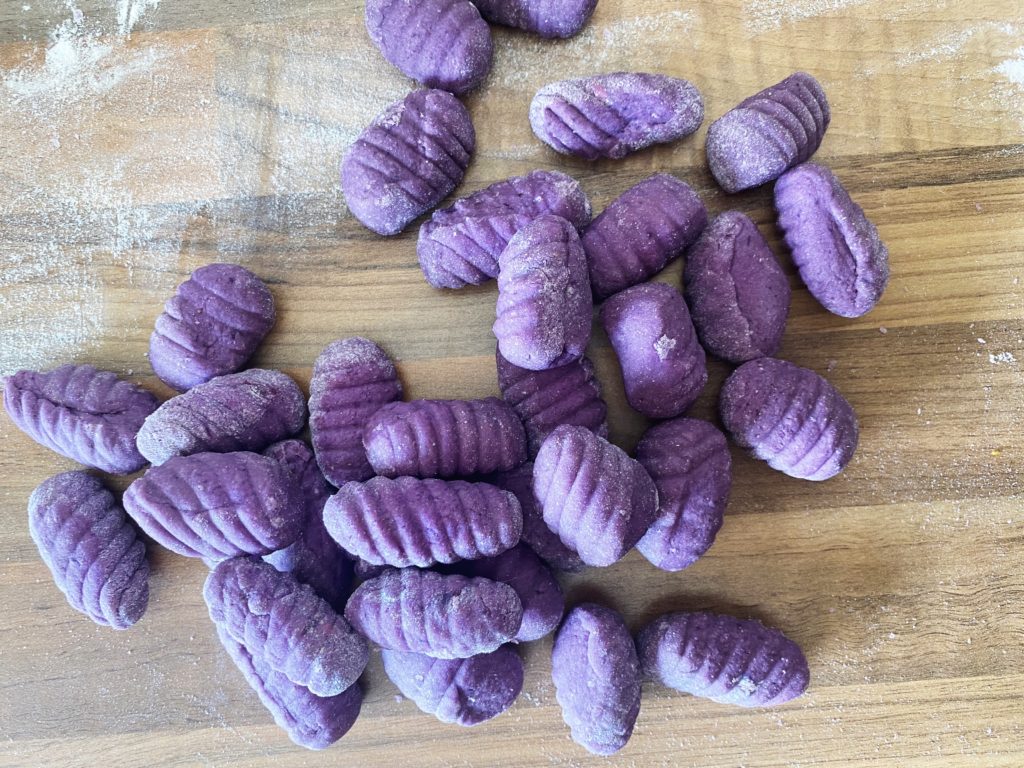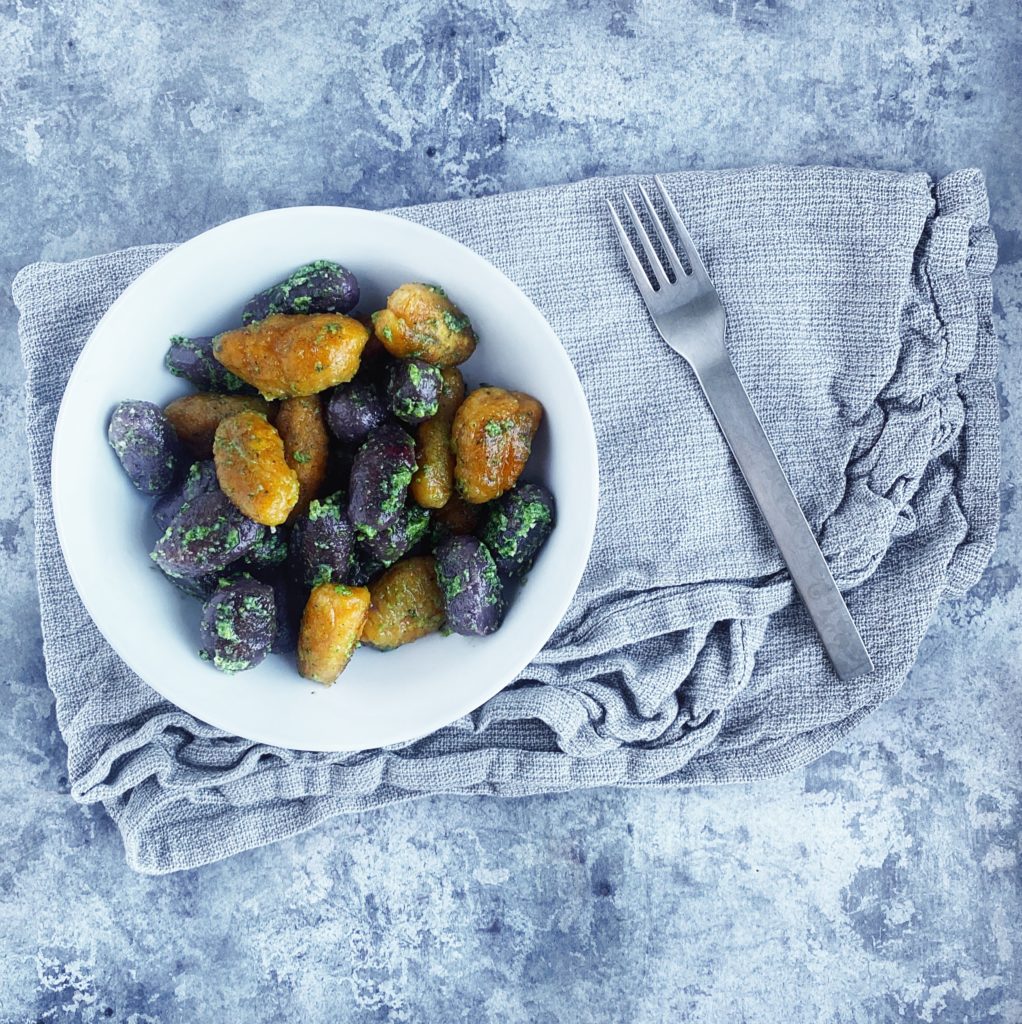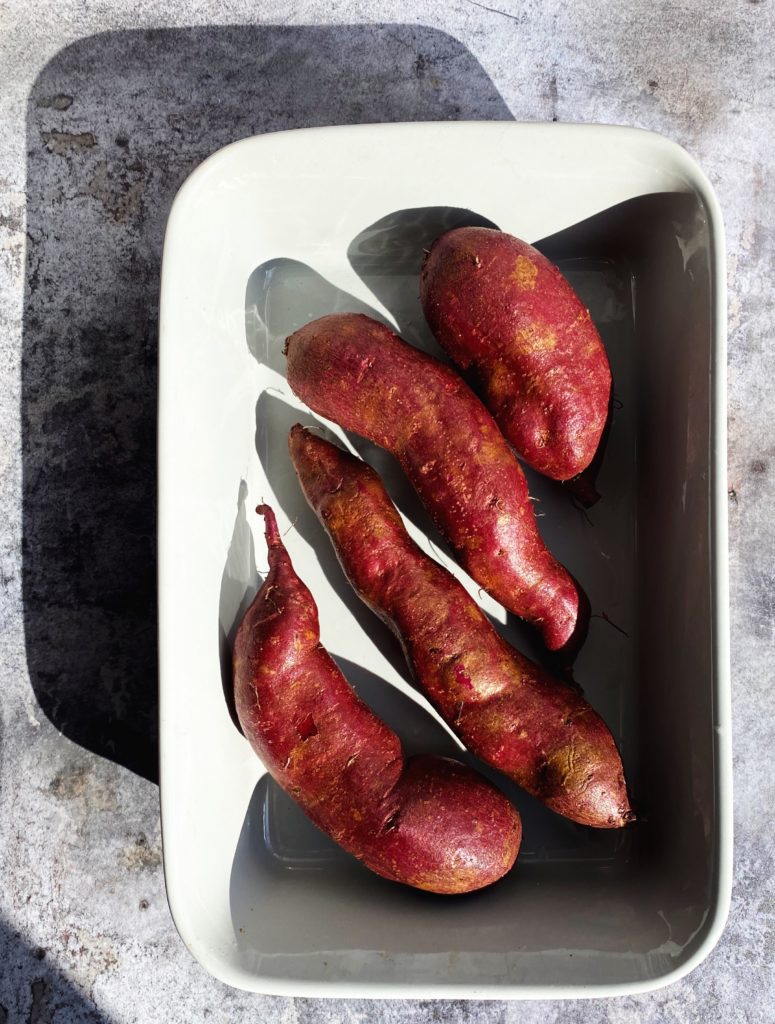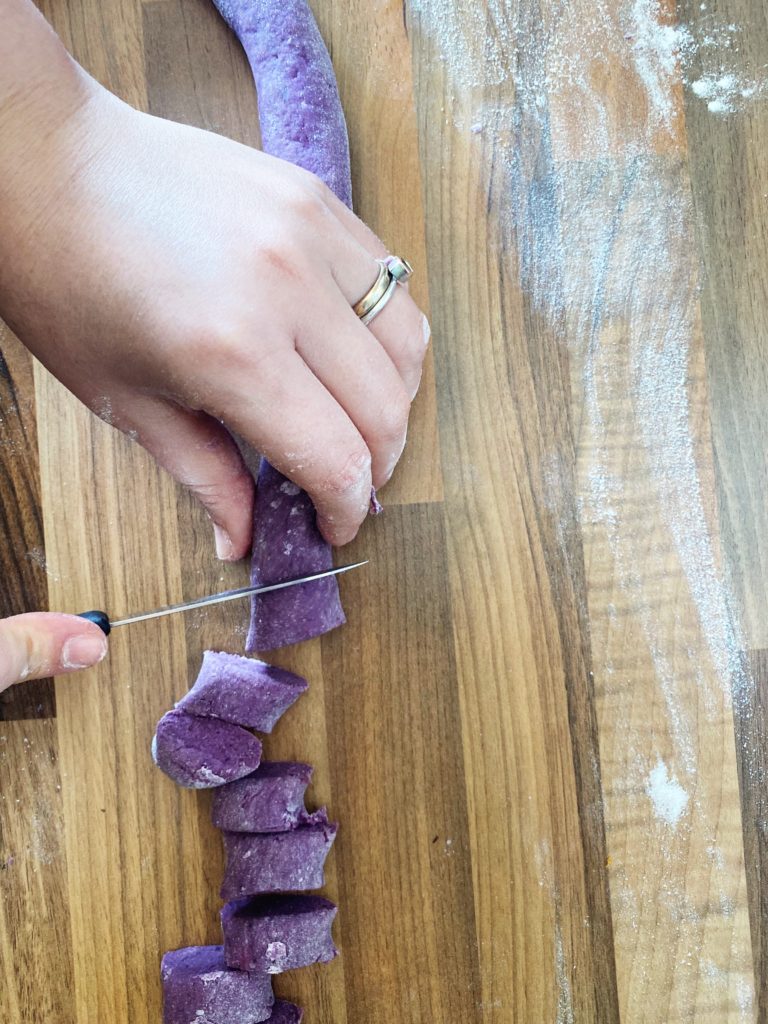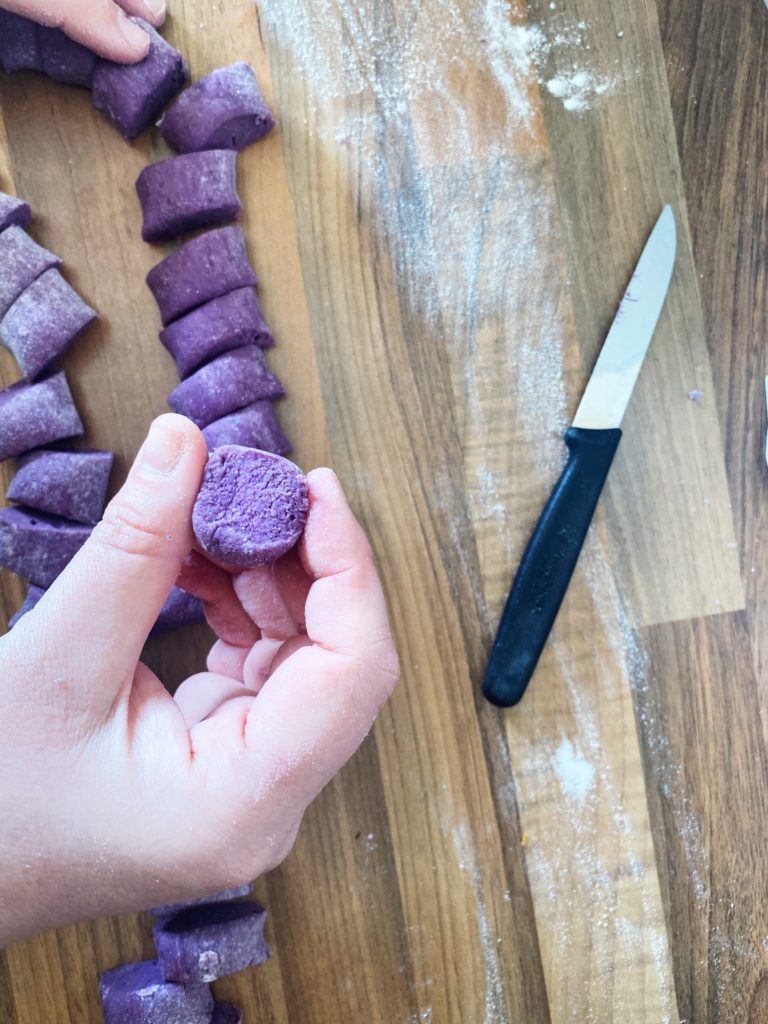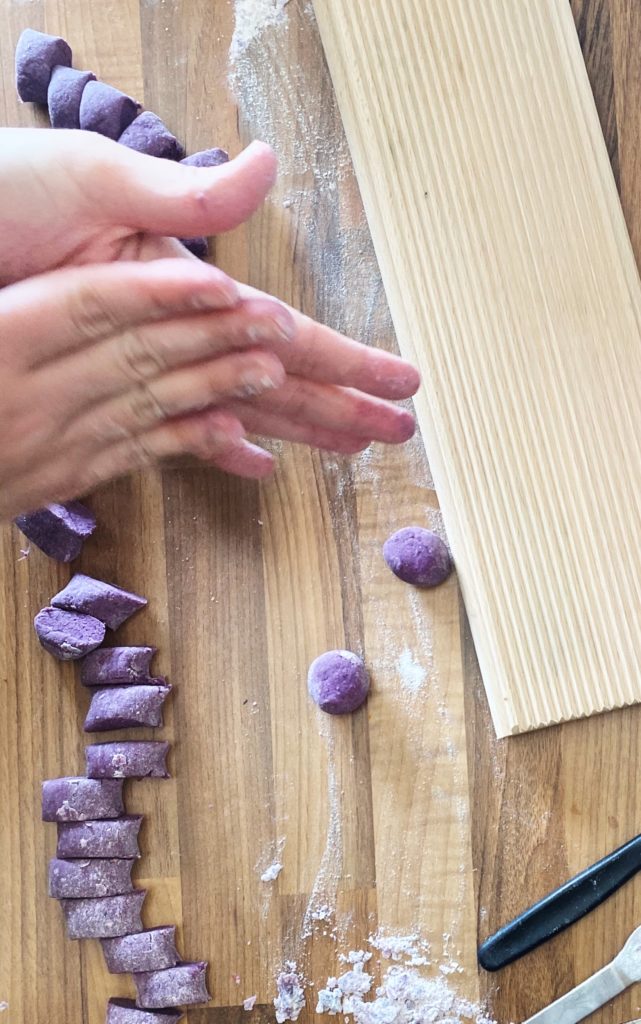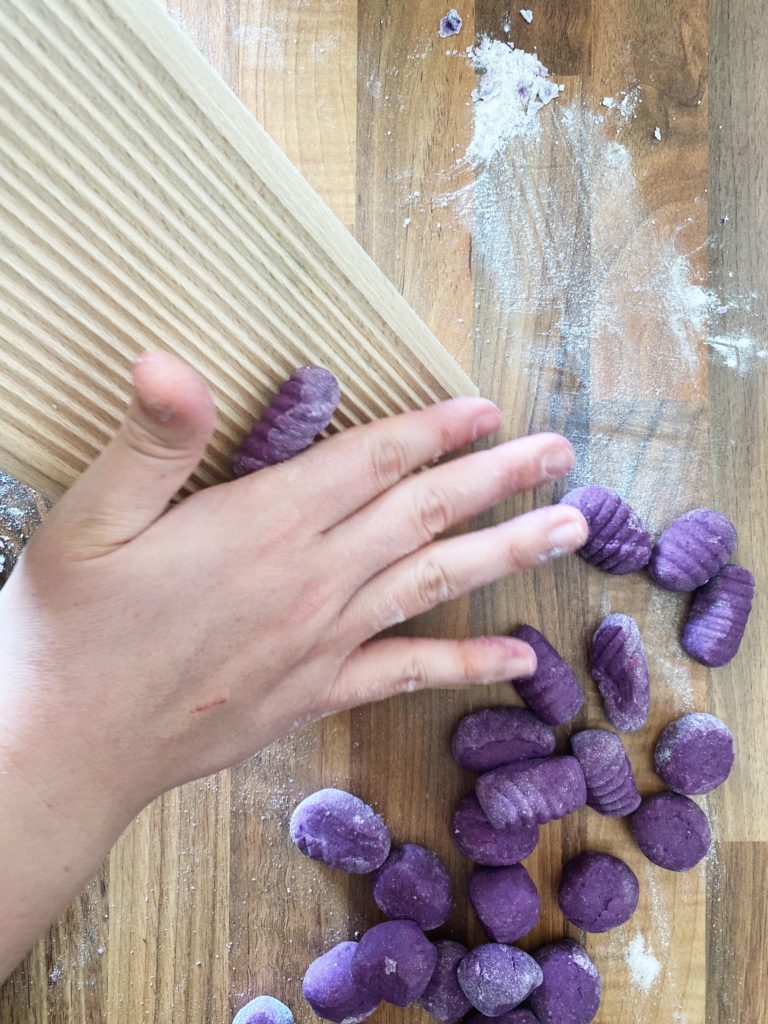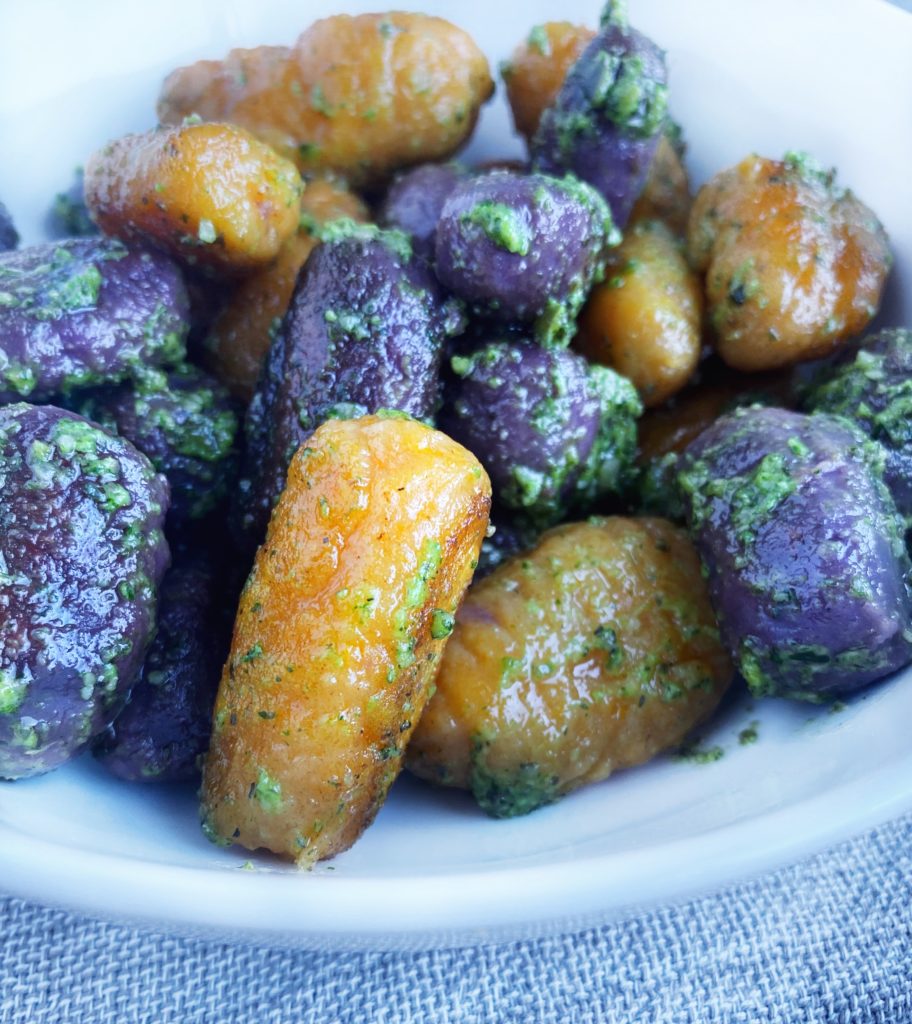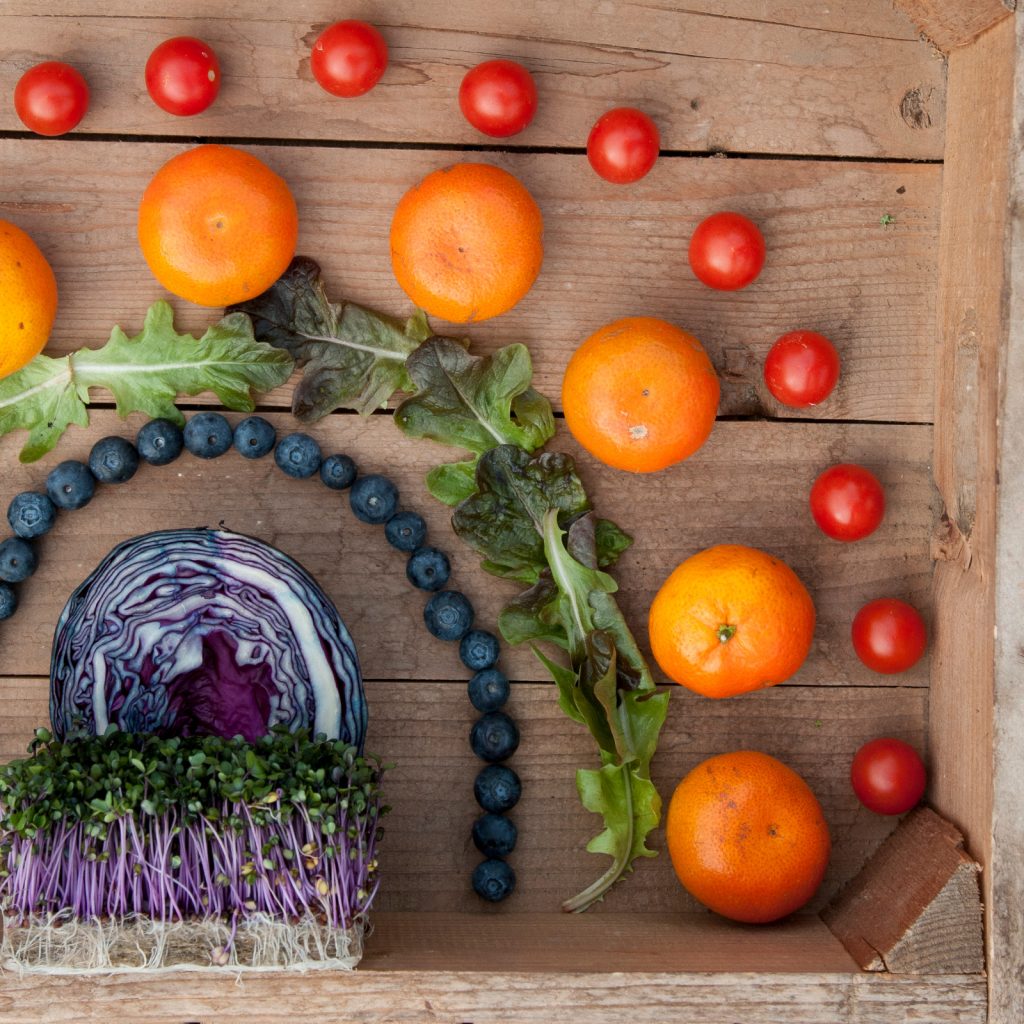
I’m not talking about eating skittles here, all plants contain phytonutrients (phyto means ‘plant’) which make them the colour they are. The different colours in plants indicate the presence of different nutrients, so it makes sense to ‘eat the rainbow’ and ensure you are getting your weekly dose of all the different vitamins and minerals that plants have to offer. Scroll down for a brief summary on what the different colours contain.
It’s easy to fall into a routine of eating the same fruits, vegetables and even the same meals each week, but it’s important for our health to eat a wide variety. Getting a set fruit and veg box delivered to your home each week is an easy way to make sure you’re switching things up regularly and getting some diversity into your diet. We always make sure to add some blues or purples to our order too as that’s one that often gets missed. So red cabbage, aubergine, blueberries, red onion, beetroot, purple sprouting broccoli etc, whatever is in season. Explore our organic veg boxes here, we deliver nationwide.
Liz x
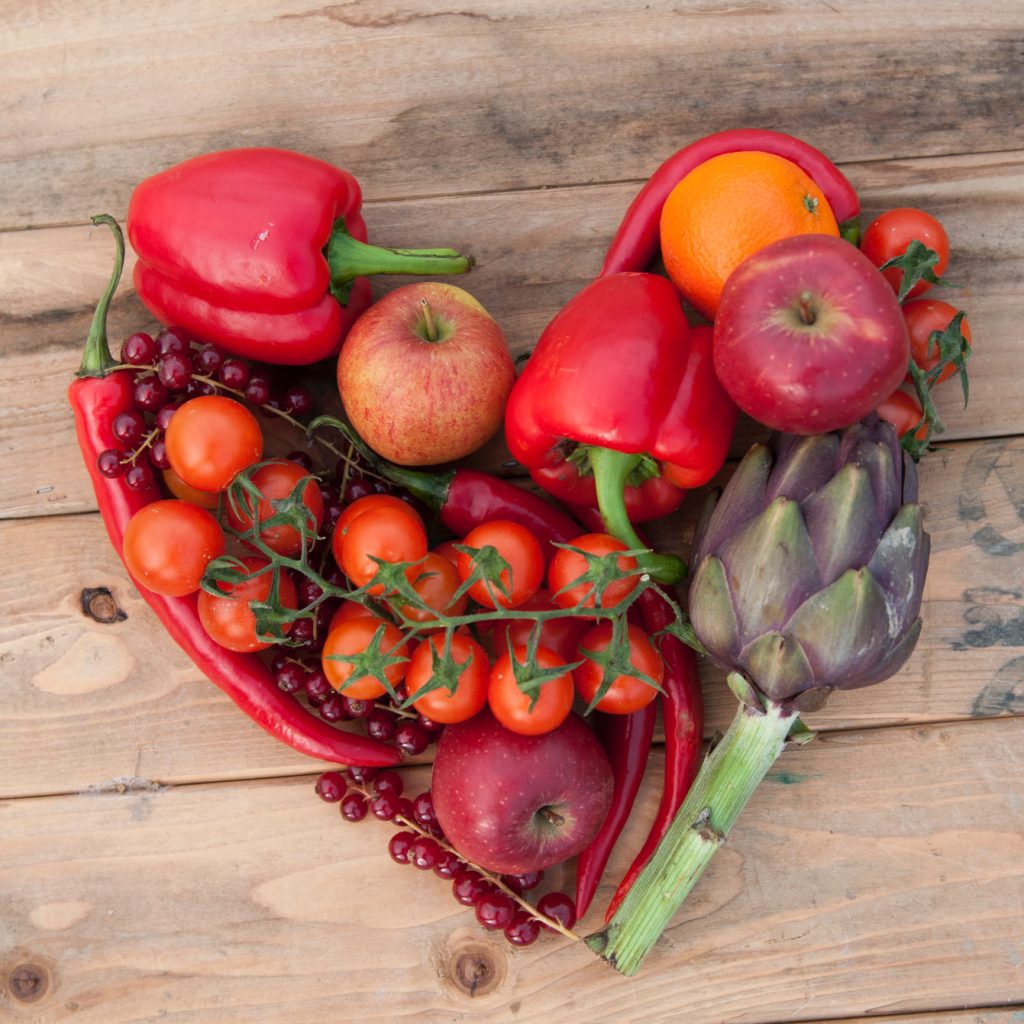
RED
RED fruits and vegetables are high in Vitamins A and C, Potassium and powerful antioxidants. Red food are especially good for your guts, they support your immune system and prevent inflamation. Add tomatoes, strawberries, peppers, red currants, cherries, apples, chillies, watermelon, pomegranates, radishes, rhubarb and more to your diet!
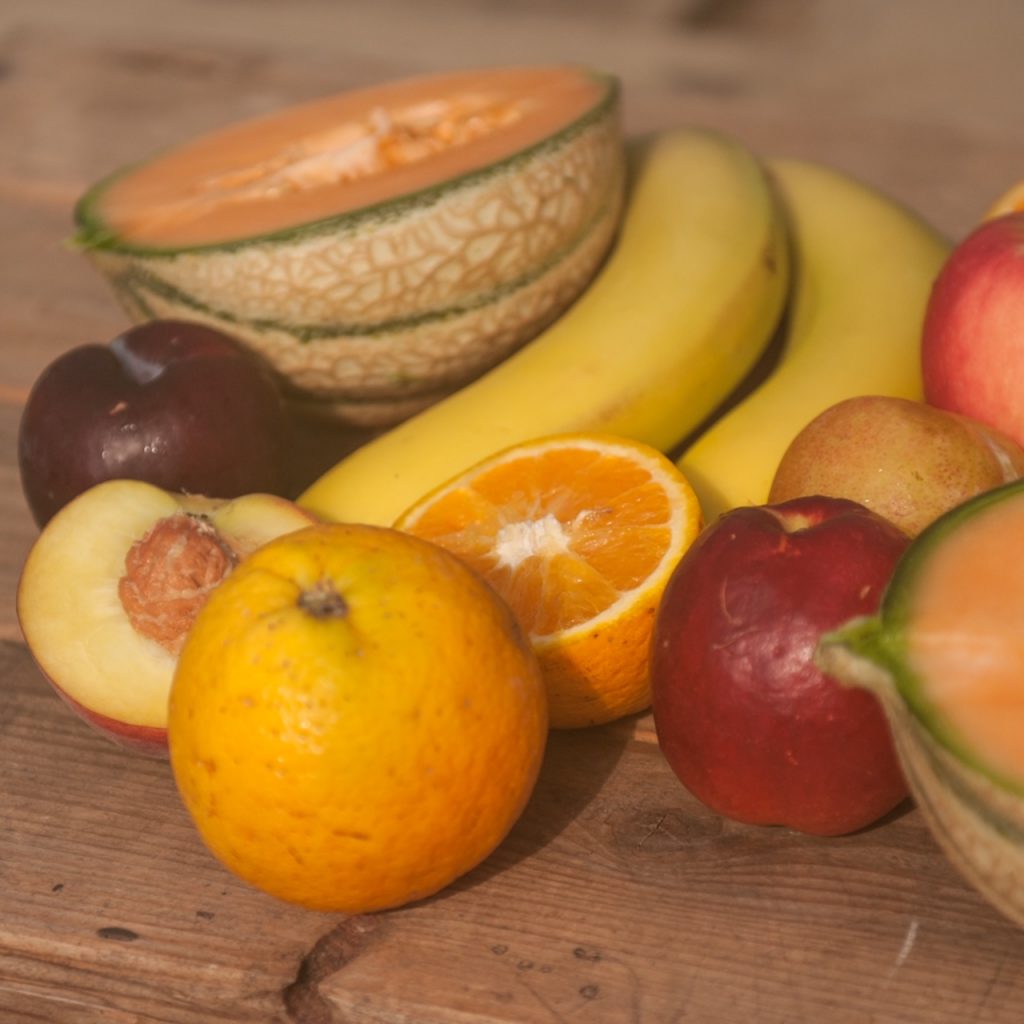
ORANGE/YELLOW
ORANGE & YELLOW fruits and vegetables are high in antioxidants Vitamin C and Beta-carotene. All great for your eyes, your skin and your immune system. Add citrus fruits, carrots, pumpkins, sweet potatoes, peppers, yellow tomatoes, melons, stone fruit and more to your diet!
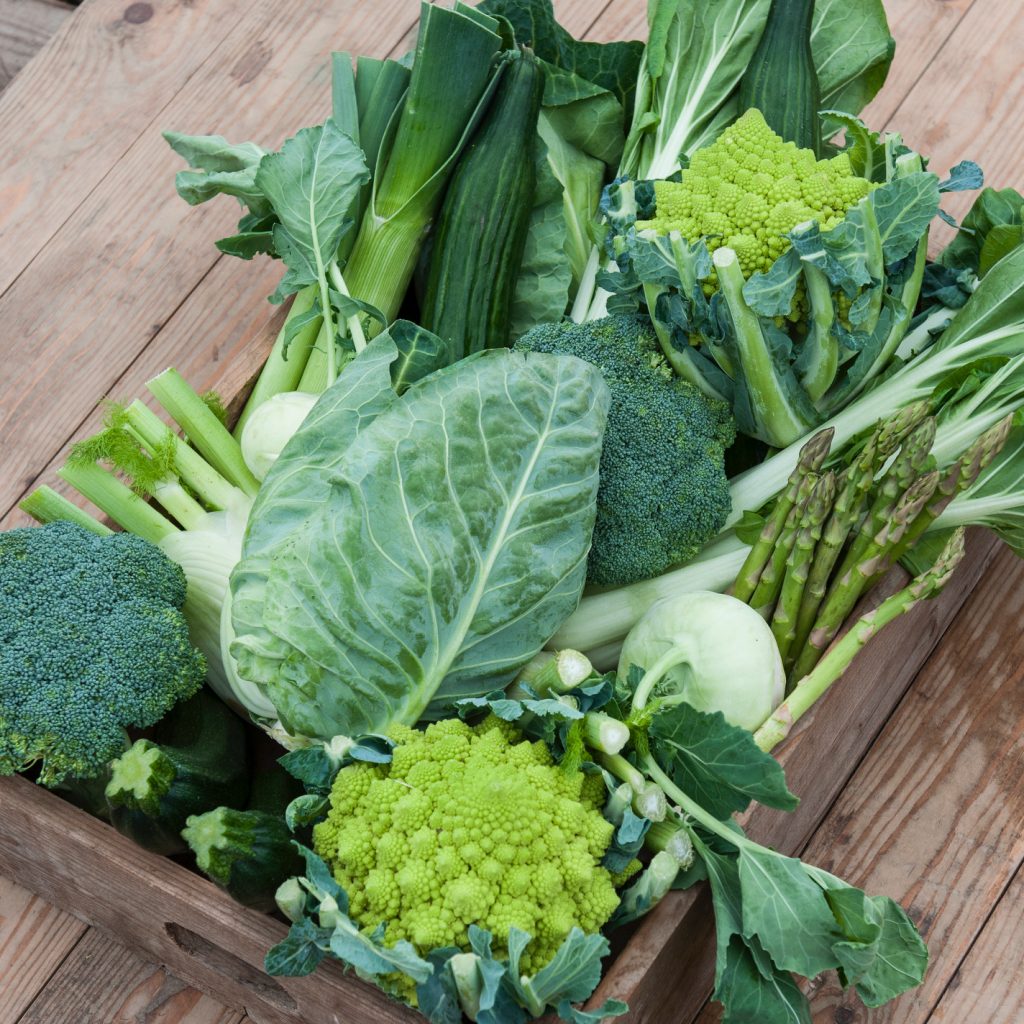
GREEN
GREEN fruits and vegetables are especially good for your heart and blood pressure. Eat your greens for lots of Vitamin K, magnesium, nitrates, folates and antioxidant high polyphenols. Add cabbages, kale, sprouts, beans, asparagus, broccoli, peas, courgettes and more to your diet!
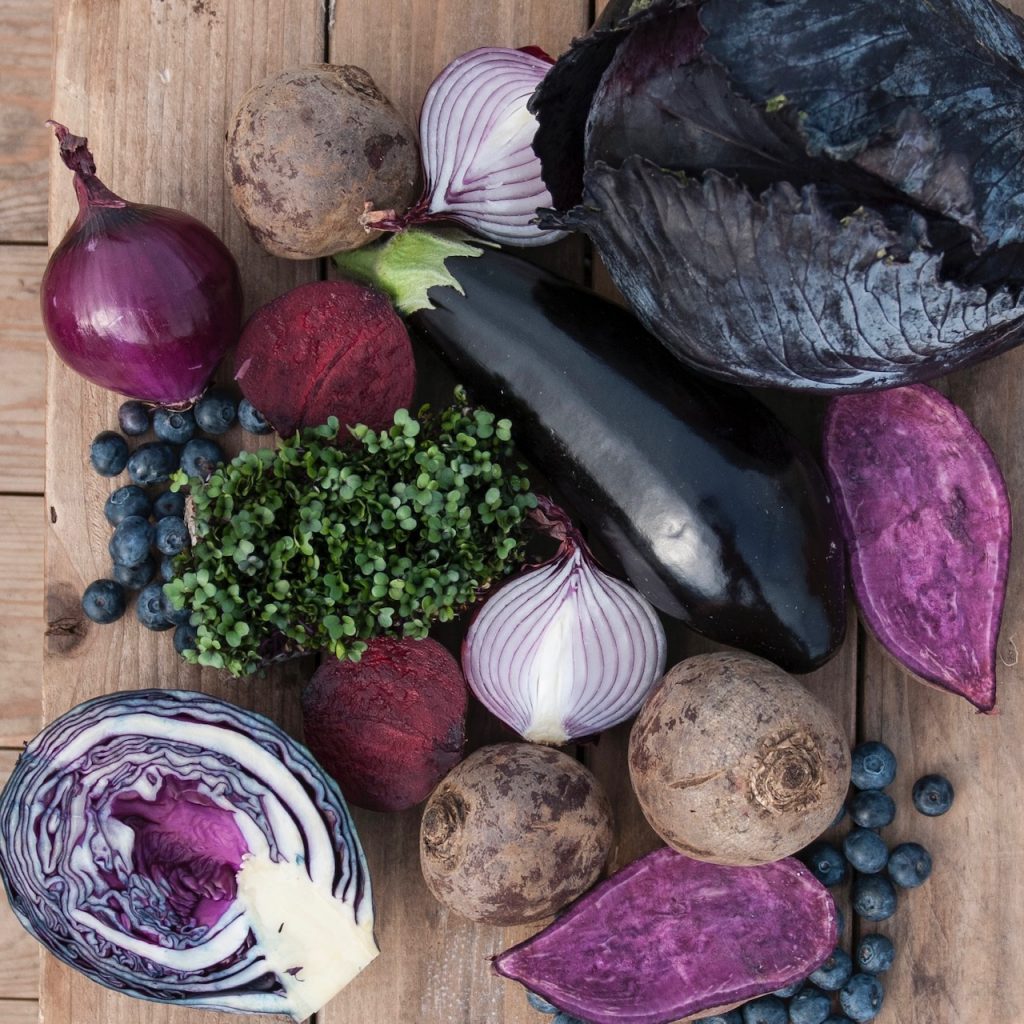
BLUE/PURPLE
BLUE/PURPLE fruits and vegetables are especially high in anthocyanin. This special antioxidant can cross the blood-brain barrier to apply their benefits on brain cells. If you want to improve your memory, mood and cognition, eat more purple foods. Add red cabbage, beetroot, blueberries, red onions, purple sprouting broccoli, aubergines and more to your diet!
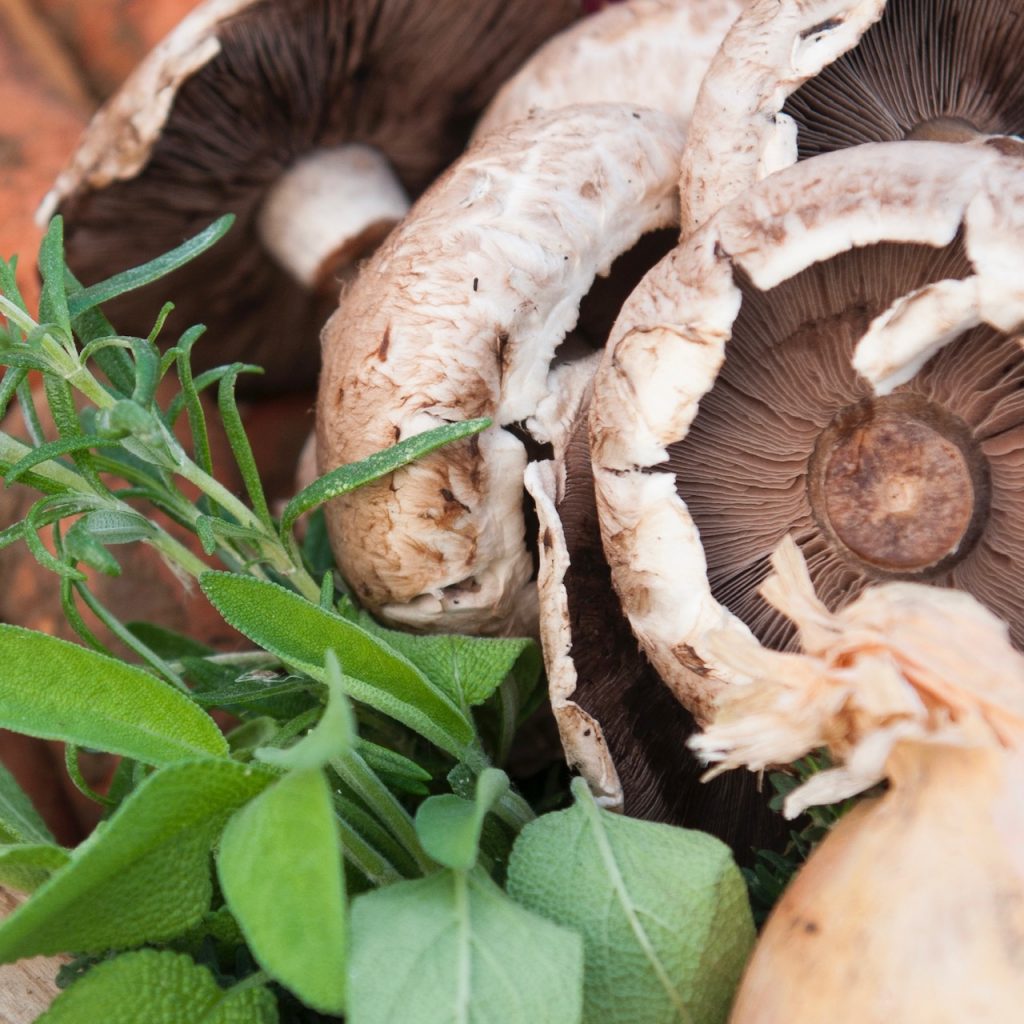
WHITE/BROWN
WHITE/BROWN fruits and vegetables, although not as brightly coloured, also contain important vitamins and minerals. They protect against certain cancers and keep bones strong. Add mushrooms, garlic, onions, potatoes, rice, wheat, beans, cauliflower, parsnips, celeriac and more to your diet!

